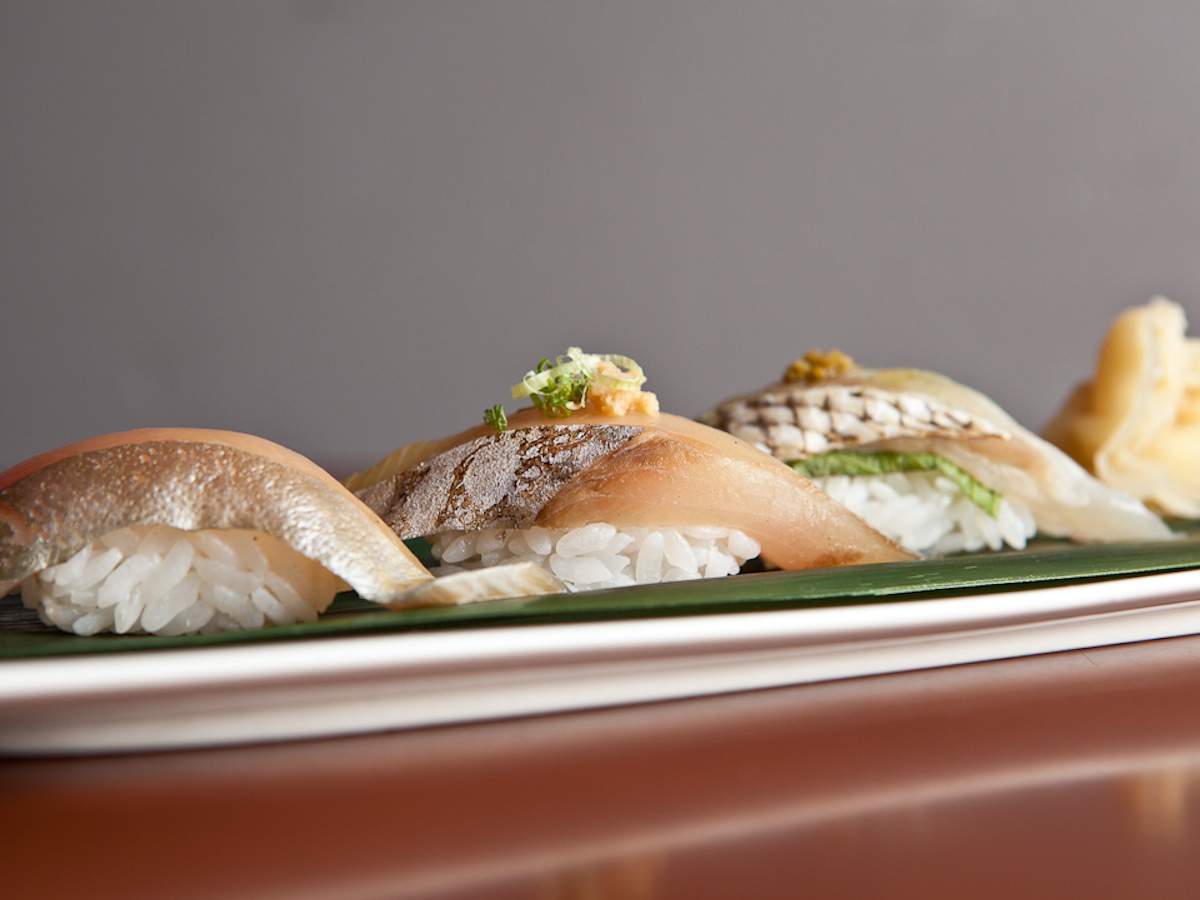On a summer evening—or simply after a long day at work—there’s nothing better than a row of fresh oysters and a glass of wine. Thanks to a growing legion of aquaculture farmers across America, times are good for shellfish lovers. Places such as the coast of the Carolinas, where oysters grow naturally in clusters and are historically served steamed, are now generating delectable singles that rival their New England counterparts.
Likewise, cured fish dishes, such as ceviche and sashimi, are no longer confined to restaurants that reflect their cultural origins. At a raw bar, the only universal rule is that seafood is served cold. Some items, like shrimps, crab, and lobster, may be cooked and chilled while others are cured with lemon, salt, or sugar. Bivalve mollusks such as oysters, clams, and mussels may come unadorned, preserved on ice.
The ultimate raw bar splurge—and the best way to sample and share the ocean’s bounty—is a seafood tower. In coastal cities such as Boston, Charleston, and Seattle, a two- or three-tiered display of oysters, shrimp, crab, clams, and caviar can be the dreamy highlight of an entire trip, or the focal point of a special night out.
Some raw bars anchor seafood restaurants, while others complement steakhouses or bistros. Here are six dish types that define the ultimate raw bars, plus a selection of spots to enjoy them across the U.S.

Few foods are as deceivingly simple as boiled shrimp. A wreath of shrimp around a glass of tangy cocktail sauce—ketchup, dressed up with horseradish, pepper, lemon, or Worcestershire—became ubiquitous on appetizer line-ups by the second half of the 20th-century. Done right, a shrimp cocktail is worthy of the spotlight. That begins with wild shrimp, quickly cooked in a salty bouillon, then plunged into an ice bath. If the texture and flavors are spot on, the cocktail sauce is an afterthought—something to mix up flavors on the fourth or fifth bite.
Where to try: Pearl Dive Oyster Palace in Washington, DC, Clark’s Oyster Bar in Austin, and Strip House in New York City

These briny bivalves are the star of any raw bar, and distinguishing between the flavors of an Olympia from the Pacific Northwest and a Belon from Maine can take a level of focus that’s typically reserved for wine. The best oyster rarely requires an accessory—when ordering a half dozen or so, it’s best to slurp your first as nature intended. But it’s common to brighten up its flavor with a mignonette: Champagne or red wine vinegar flavored with pepper and minced shallots. In the right moment, there’s also no shame in dropping an oyster in a shot of vodka with some cocktail sauce and slugging it back, shooter-style.
Where to try: Elliott’s Oyster House in Seattle, Grand Isle in New Orleans, Rappahannock – Richmond in Richmond, and Bar George in Charleston

These mollusks vary vastly from each other—for example, littleneck clams are compact little flavor vessels, while a New England steamer can be a salty mouthful. Mussels have darker shells and a milder flavor that’s often dominated by sauces in cooked dishes. Clams typically boast light exteriors, often cooked with butter and white wine. Both, though not as prominent as oysters, can be spotted on raw bar menus. Depending on the species, clams may be served raw, while mussels are more likely to be smoked or steamed and then chilled.
Where to try: GT Fish & Oyster in Chicago, B&G Oysters in Boston, and Grand Central Oyster Bar in New York City

Crab and lobster are almost never served truly raw—the hard-shelled crustaceans are notorious for scavenging the ocean floor, eating with little discretion. That’s why it’s safer to steam or boil them. Cooked then chilled, crab and lobster can often be the scene-stealers at a raw bar. Cocktail sauce, mignonette, or a mayonnaise-based bagnarotte sauce all make worthy accompaniments. In the southeastern United States, there’s hardly a more sought-after delicacy than a stone crab claw, which can be harvested while leaving the animal alive to regrow its limb. Lobsters are coveted in the northeast, and Alaskan king crab legs make appearances across the country. Some species, such as the blue crab, produce flaky meat, best consumed as a dip or a jumbo lump crab cocktail.
Where to try: The Olde Bar in Philadelphia and The Kingstide in Charleston

Derived from the Italian word for “raw,” crudo can refer to many things at a raw bar, whether that’s pickled octopus carpaccio, cured scallops, or a thin slice of tuna. Latin American ceviche, Hawaiian poke, and Japanese sashimi can all qualify. Raw fish crudo is often served sliced and simple, or jazzed up with flavors such as garlic aioli, ginger, capers, and shallots. Cured in vinegar and tossed with onions and peppers in a ceviche, it’s a dish that may even appear alongside chips or bread, with a mignonette or ponzu sauce.
Where to try: Row 34 in Boston, Dusek’s Tavern in Chicago, The Darling Oyster Bar in Charleston, and Empire State South in Atlanta

Fish roe, most often from salmon, sturgeon, trout, carp, and whitefish, deserves delicacy status. Removing fish eggs from the ecosystem can naturally deplete the population of those species. As a result, today, nearly all caviar is farm-raised and sustainably harvested in locales such as China, Iran, and Russia—though American caviar producers are now emerging. That careful, labor-intensive extraction process explains why caviar is often offered as a “service” or addendum to a dish. These tiny, gelatinous spheres overflow with an oceanic flavor and can be the crown-topping jewel to a perfect meal.
Where to try: The Winsor House at Island Creek Oyster Farm in Duxbury, Petrossian Restaurant & Boutique in Los Angeles, and Husk in Savannah
Stratton Lawrence is a Folly Beach-based food and travel writer, and an enthusiast of oyster roasts, glassy waves, and sunset cocktails.




